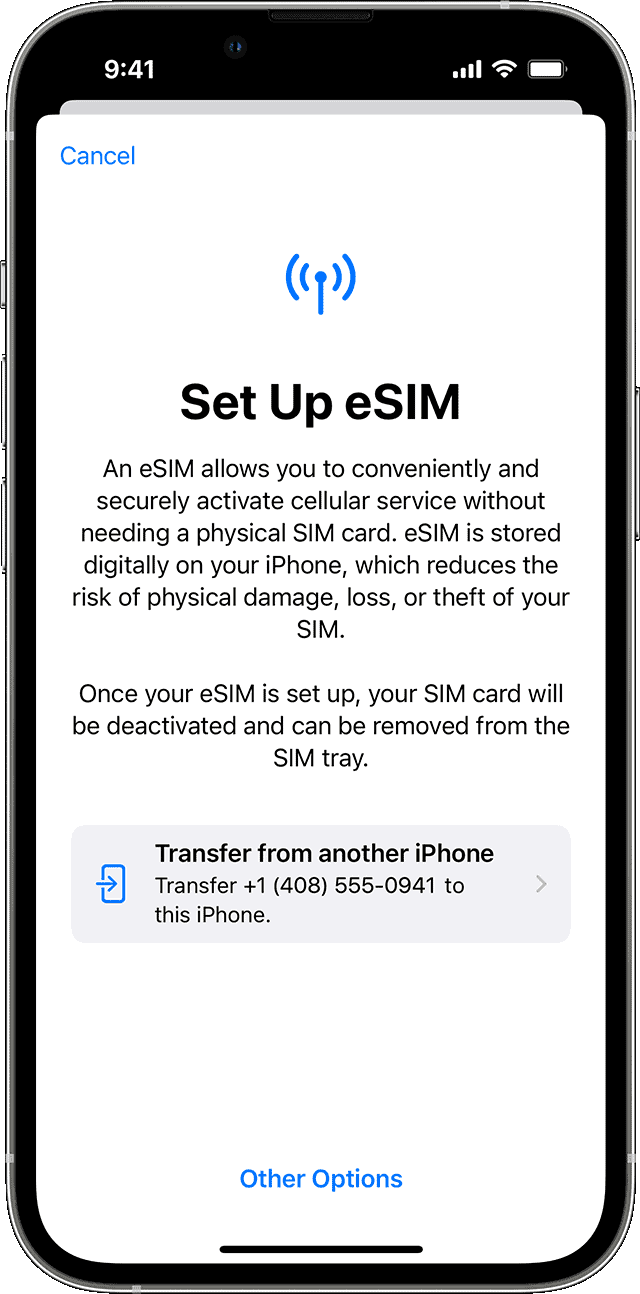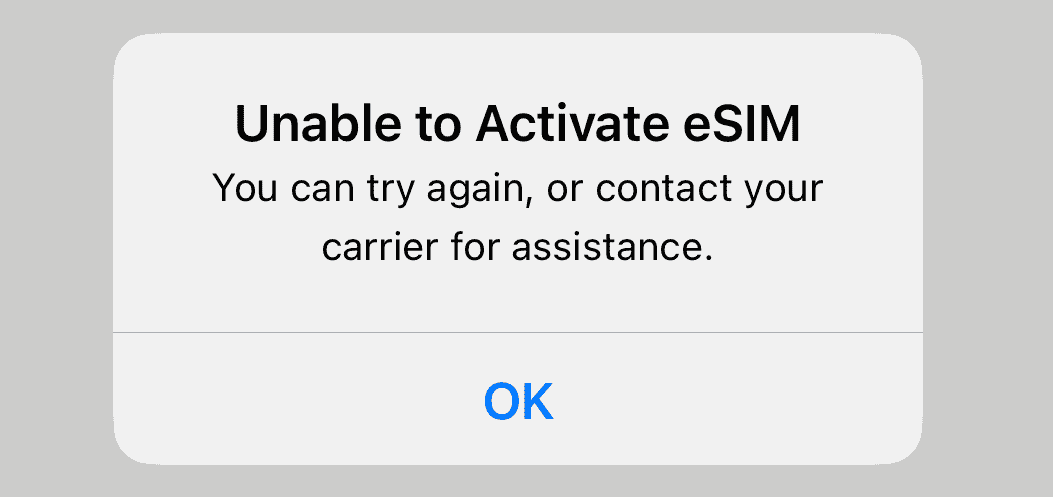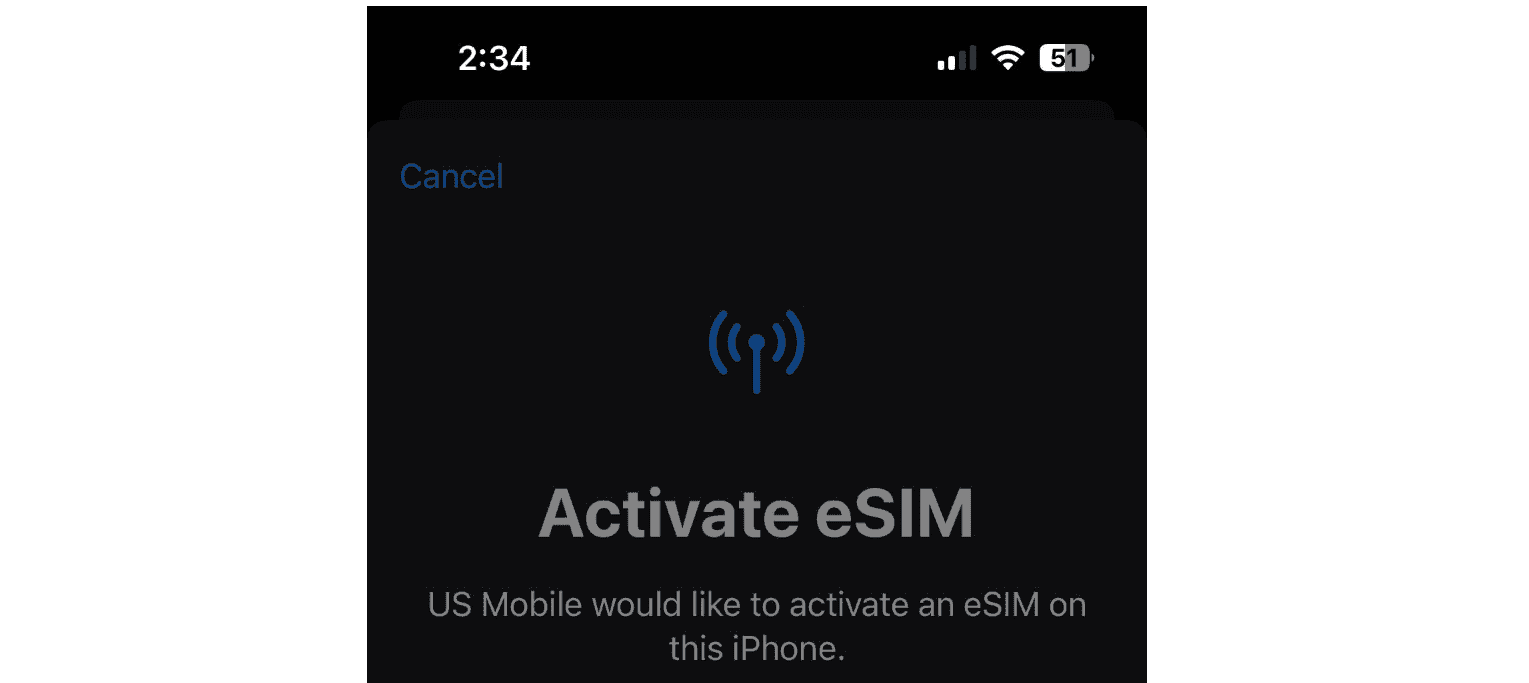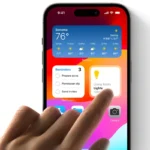eSIM is a new way to connect your phone without a physical card. It’s built into many modern devices. An eSIM stores your phone number and carrier info digitally inside your phone. This makes it easy to switch between different phone plans or carriers. With its digital nature and inherent flexibility, eSIM is paving the way for a future where switching carriers or activating new plans is as simple as a few taps on your phone.
eSIMs save space in phones and other gadgets. They also use less power than regular SIM cards. This means your battery can last longer. You can set up an eSIM by scanning a QR code or using an app from your phone company.
Many phones now work with eSIMs. Some even have both eSIM and regular SIM card slots. This lets you use two phone numbers on one device. It’s great for people who travel or need separate work and personal numbers.

The Future of Connectivity: Understanding eSIM Technology
What is an eSIM?
An eSIM, or embedded SIM, is a tiny chip built into your phone that replaces the traditional, physical SIM card. It stores your carrier information digitally, allowing you to activate cellular plans and connect to networks without inserting a physical card.
How Does an eSIM Work?
eSIMs work by downloading your carrier profile directly onto the chip. This profile contains all the information your phone needs to connect to the network, including your phone number, data plan, and carrier settings. You can activate a new plan or switch carriers simply by downloading a new profile.
Benefits of eSIMs
- Convenience: No need to wait for a physical SIM card or visit a store. You can activate plans instantly, even when traveling.
- Flexibility: Easily switch between carriers or plans, or even have multiple plans on the same device.
- Space-saving: eSIMs free up space inside your phone, allowing for smaller devices or additional features.
- Durability: Since they’re embedded, eSIMs are less prone to damage or loss compared to physical SIMs.
Drawbacks of eSIMs
- Device Compatibility: Not all phones support eSIM technology.
- Carrier Support: Not all carriers offer eSIM plans.
- Switching Devices: Transferring an eSIM to a new device might require contacting your carrier.

Activating an eSIM
The process of activating an eSIM varies depending on your carrier and device. Generally, you’ll need to:
- Check compatibility: Make sure your phone supports eSIM and your carrier offers eSIM plans.
- Obtain an eSIM profile: Your carrier will provide you with a QR code or activation code to download the profile.
- Scan or enter the code: Follow the on-screen instructions on your phone to scan the QR code or enter the activation code.
- Activate the plan: Once the profile is downloaded, activate it and start using your new cellular plan.
Table: Comparison of eSIM vs. Physical SIM
| Feature | eSIM | Physical SIM |
|---|---|---|
| Form Factor | Embedded chip | Removable card |
| Activation | Digital download | Physical insertion |
| Convenience | High | Low |
| Flexibility | High | Low |
| Durability | High | Low |
| Device Compatibility | Limited | Wide |
eSIM technology is transforming the way we connect to cellular networks. As more devices and carriers adopt eSIMs, we can expect even greater convenience and flexibility in managing our mobile plans.
Key Takeaways
- eSIMs are digital SIM cards built into phones and other devices
- They make it easy to switch carriers and save space in devices
- Many modern smartphones now support eSIM technology
Understanding eSIM Technology
eSIMs are changing how phones connect to networks. They work differently from old SIM cards and offer new benefits.
Evolution from Physical SIM to eSIM
Physical SIM cards have been around for years. They are small chips you put in your phone. eSIMs are new. They are built into the phone and can’t be removed.
eSIMs do the same job as physical SIMs. But they don’t need a card slot. This saves space inside phones. It also makes it easier to switch carriers.
Phone makers are using eSIMs more often now. Many new smartphones have both eSIM and physical SIM options.
How eSIMs Work
eSIMs store carrier info digitally in your phone. To use one you need to activate it. This is done through the internet or by scanning a QR code.
You can add plans from different carriers to your eSIM. This lets you use two phone numbers on one device. It’s great for work and personal use.
eSIMs are very secure. The info on them is protected just like on a physical SIM. But eSIMs can be updated remotely which adds extra safety.

Benefits of eSIM Over Physical SIM Cards
eSIMs make switching carriers easy. You don’t need to go to a store or wait for a new card. You can change plans right on your phone.
Travelers love eSIMs. They can add local plans when visiting other countries. This saves money on roaming fees.
eSIMs are good for the planet too. They cut down on plastic waste from SIM cards. And they take up less space so phones can be smaller or have bigger batteries.
eSIM in Devices and User Experience
eSIMs make phones easier to use. They let you switch carriers fast and use multiple plans. This new tech is changing how we connect our devices.
eSIM in iPhones
Apple added eSIM to iPhones in 2018. The iPhone XS, XS Max, and XR were the first models with this feature. Now all new iPhones use eSIM. iOS 16 and 17.4 made setup even simpler.
To set up an eSIM on iPhone:
- Tap a link from your carrier
- Allow the “Activate New eSIM” pop-up
- Follow the on-screen steps
You can have multiple eSIMs active at once. This is great for travel or using separate work and personal lines.
eSIM in Other Smart Devices
eSIMs aren’t just for iPhones. Many Android phones like Samsung Galaxy models have them too. iPads and smartwatches also use eSIMs.
These devices let you:
- Add cell plans without a physical SIM
- Switch between plans easily
- Use local data when traveling
eSIMs save space inside devices. This helps make them thinner and more water-resistant.
Global Use and Carrier Support
eSIMs work in many countries. Major carriers worldwide support them. This makes it easy to get connected when you travel.
Some benefits of global eSIM use:
- Buy local data plans instantly
- Avoid high roaming fees
- Keep your home number active
Services like Airalo offer eSIM plans for lots of countries. Some airlines even sell eSIM data packages for your trip.
More carriers add eSIM support each year. This tech is becoming the new standard for mobile connectivity.

FAQs
How to fix “Unable to activate eSIM” error
If you encounter the “Unable to activate eSIM” error, here are some troubleshooting steps:
- Check your internet connection: Ensure you have a stable internet connection, either through Wi-Fi or mobile data.
- Restart your device: A simple restart can often resolve temporary glitches.
- Check carrier settings: Make sure your device has the latest carrier settings updates. Go to Settings > General > About and see if any updates are available.
- Toggle Airplane mode: Turn Airplane mode on and off to reset your network connections.
- Reset network settings: If the issue persists, reset your network settings. Go to Settings > General > Reset > Reset Network Settings. Note that this will erase your saved Wi-Fi passwords.
- Contact your carrier: If none of these steps work, contact your carrier’s support team for further assistance.
What is the disadvantage of eSIM?
While eSIMs offer several benefits, there are also some drawbacks to consider:
- Limited device compatibility: Not all phones support eSIM technology, so you may need to upgrade your device to use it.
- Carrier support: Not all carriers offer eSIM plans, limiting your options.
- Switching devices: Transferring an eSIM to a new device might require contacting your carrier or going through a specific process.
- Potential lock-in: Some carriers might lock your eSIM to their network, making it difficult to switch carriers.
How does the eSIM work?
An eSIM is a tiny chip embedded in your phone that stores your carrier information digitally. When you activate a new plan, the carrier sends a profile containing your phone number, data plan, and settings directly to your eSIM. This eliminates the need for a physical SIM card.
Do eSIMs change your phone number?
No, using an eSIM doesn’t automatically change your phone number. You can keep your existing number when switching to an eSIM or transferring it to a new device.
Is eSIM better than physical SIM?
eSIMs offer several advantages over physical SIMs, including:
- Convenience: Activating plans and switching carriers is faster and easier with eSIMs.
- Flexibility: You can have multiple eSIM profiles on the same device, making it convenient for travel or managing multiple numbers.
- Space-saving: eSIMs free up space inside your phone.
- Durability: eSIMs are less prone to damage or loss compared to physical SIMs.
However, physical SIMs are still more widely supported and might be a better option if your device or carrier doesn’t support eSIMs.
Why is eSIM not popular?
eSIM adoption is still growing, and there are a few reasons why it hasn’t become mainstream yet:
- Limited device compatibility: Older phones often lack eSIM support.
- Carrier limitations: Not all carriers offer eSIM plans or support eSIM features fully.
- Consumer awareness: Many people are still unfamiliar with eSIM technology and its benefits.
Does eSIM drain battery?
No, using an eSIM should not significantly impact your phone’s battery life. eSIMs consume minimal power, and their impact on battery drain is negligible compared to other components like the display or processor.







